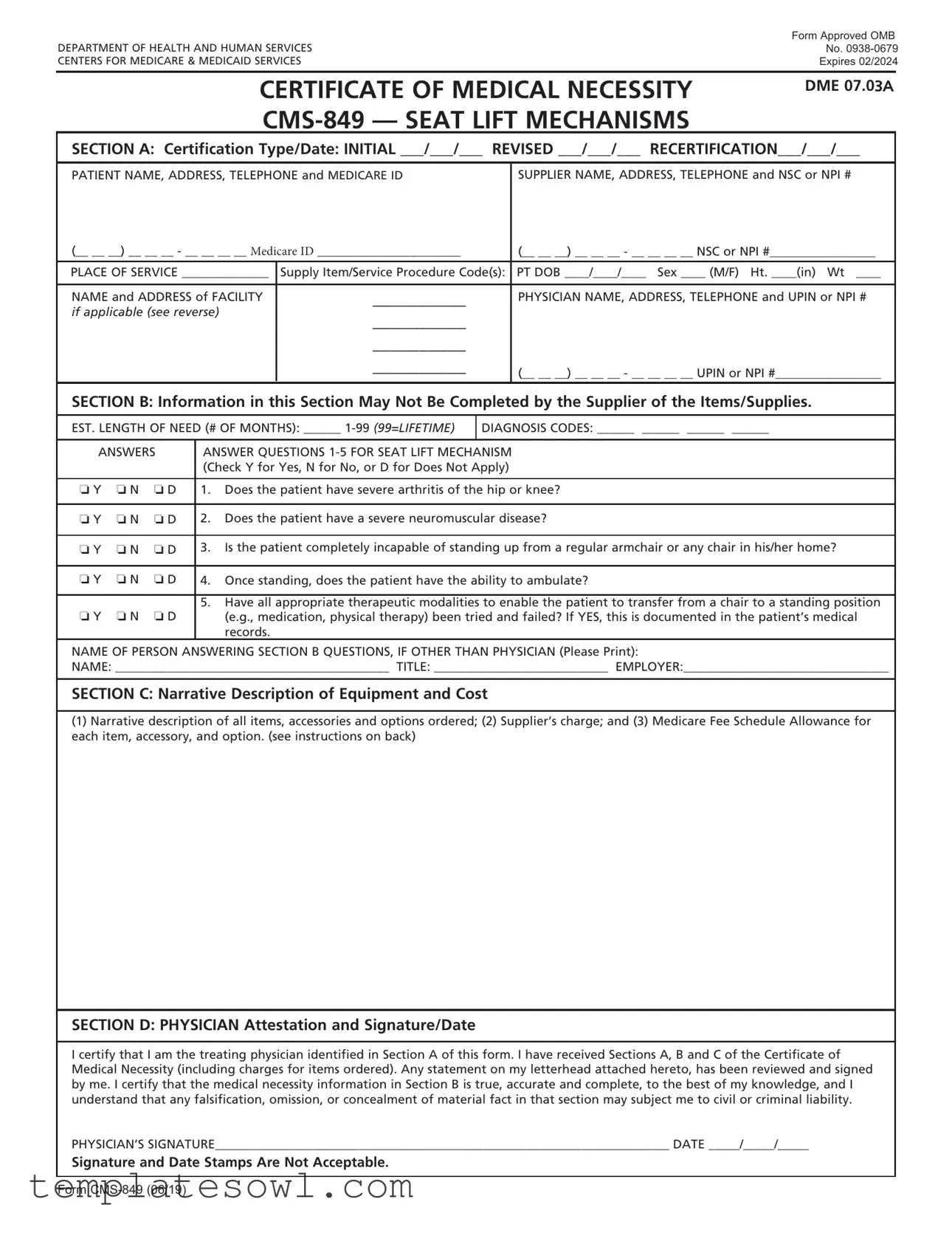What is the CMS 849 form?
The CMS 849 form, also known as the Certificate of Medical Necessity for Seat Lift Mechanisms, is a document used to certify that a patient requires a seat lift mechanism based on medical necessity. This form is essential for Medicare providers to obtain reimbursement for the device, ensuring that the patient's needs are properly addressed.
Who needs to fill out the CMS 849 form?
The CMS 849 form requires input from multiple parties. Typically, the treating physician completes Section D to certify medical necessity. Sections A and C can be filled out by the supplier, while Section B may be answered by non-physician clinicians or a physician’s employee, but it must be signed by the physician.
What information is required in Section A?
In Section A, you will need to provide the patient’s name, contact information, Medicare ID, and details about the supplier including name and NSC or NPI number. It also asks for certification type—initial, revised, or recertification—and the date. Accurate information is crucial for processing.
What is Section B about?
Section B gathers clinical information to establish the medical necessity of a seat lift mechanism. It contains specific questions that must be answered to support the claims. Anyone completing this section must ensure their answers are accurate, as they will form the basis of the medical necessity determination.
How do I determine the estimated length of need?
The estimated length of need should reflect the period the physician expects the patient will require the seat lift mechanism. You can indicate a specific number of months or use '99' for a lifetime need. This is critical for the approval process and affects reimbursement eligibility.
What happens if the form is filled out incorrectly?
Filling out the CMS 849 form incorrectly can lead to delays in processing, denials of claims, or audits. It is vital to double-check all details, including patient information, diagnosis codes, and responses in Section B. Keeping accurate records will significantly help in these situations.
What kind of equipment details are needed in Section C?
In Section C, it is essential to provide a clear narrative description of the seat lift mechanism and any accessories. You must also include the supplier’s charge and the Medicare Fee Schedule allowance for each item. Transparency and detail in this section ensure that everything can be reviewed accurately.
What is the physician's role in completing this form?
The physician plays a crucial role by verifying the accuracy and completeness of all information on the CMS 849 form. They must review Sections A, B, and C before signing in Section D, attesting that the items ordered are medically necessary for the patient. Without the physician's signature, the form will not be valid.
How can I submit the CMS 849 form?
Once completed, you should submit the CMS 849 form to Medicare as part of your claims process. It is important not to send the form to the address listed for comments or improvements. Ensure you follow the guidelines for submission according to Medicare's instructions to avoid any issues.
When does the CMS 849 form expire?
The CMS 849 form is currently set to expire in February 2024. It’s crucial to stay updated on any changes or new versions of the form to ensure compliance and facilitate timely reimbursement for the necessary equipment. Regular checks on CMS guidelines are recommended.


